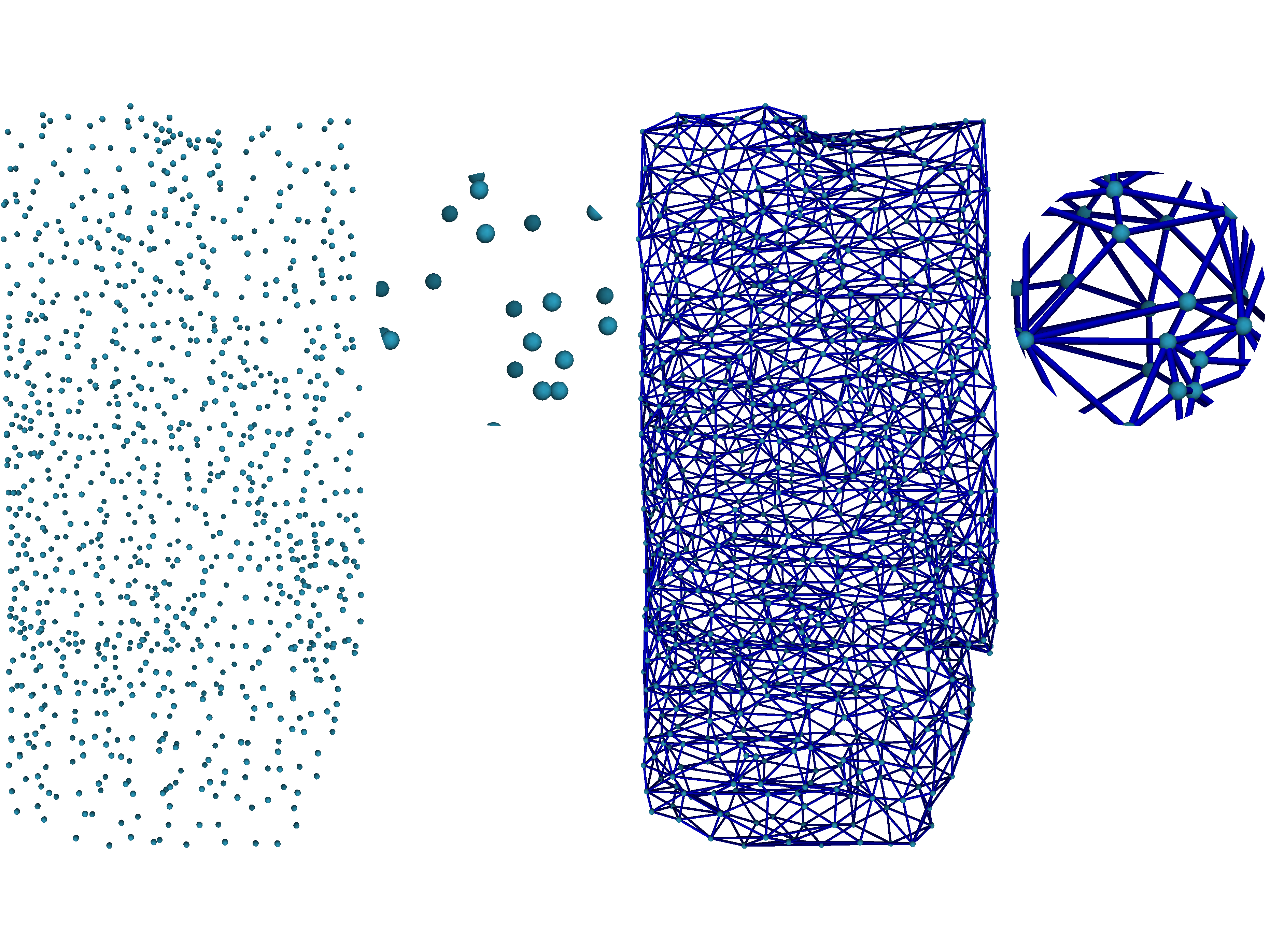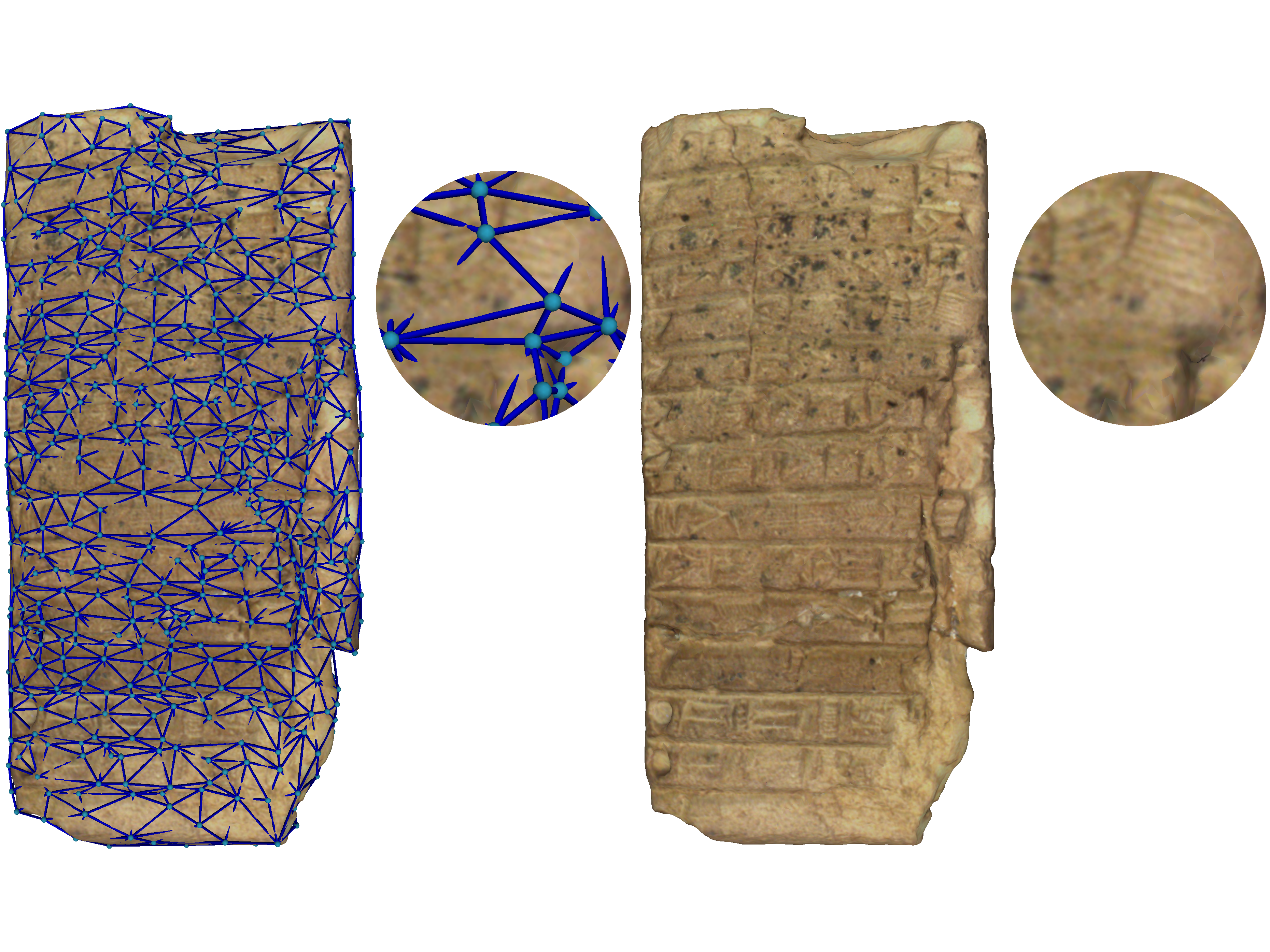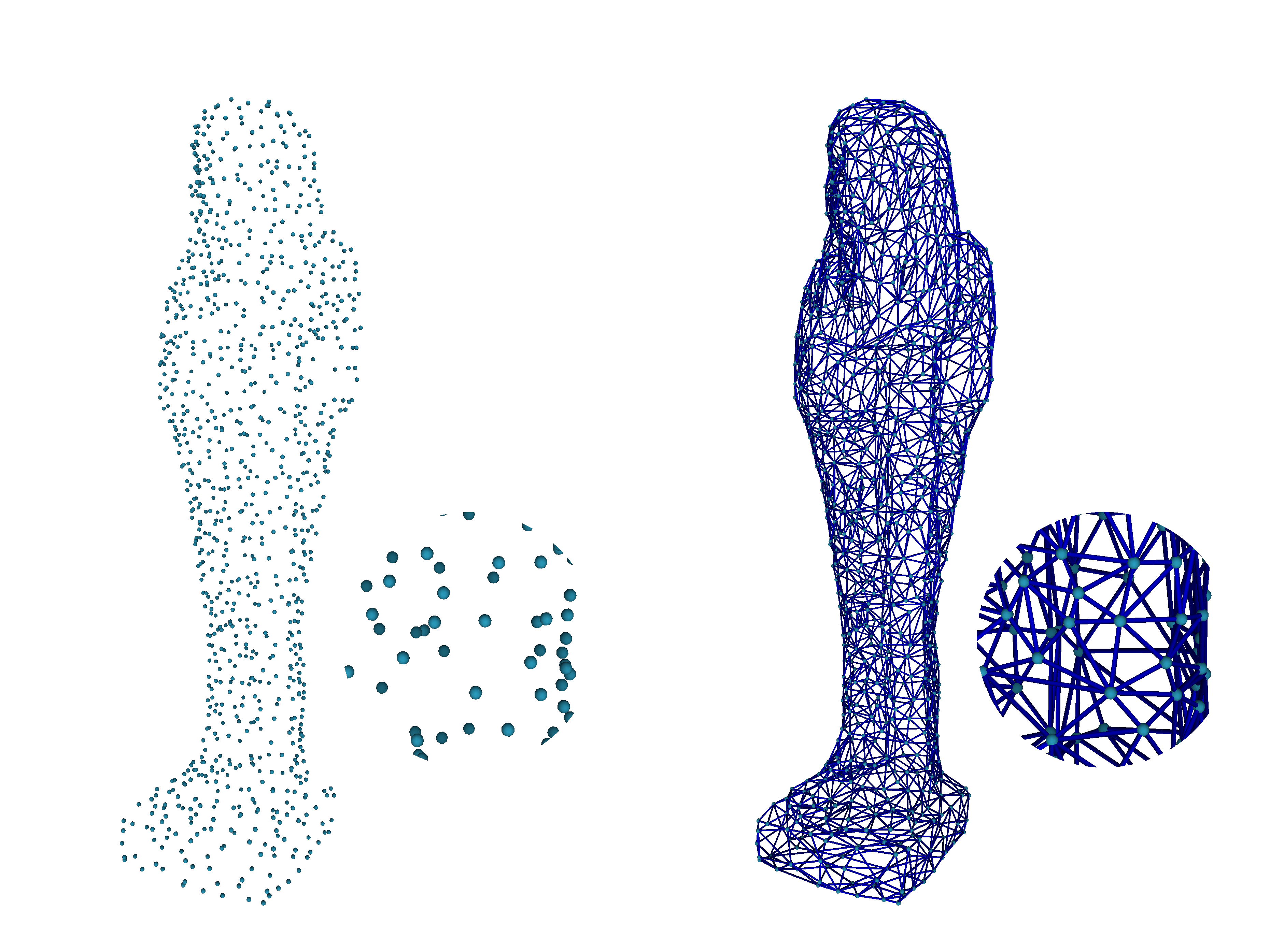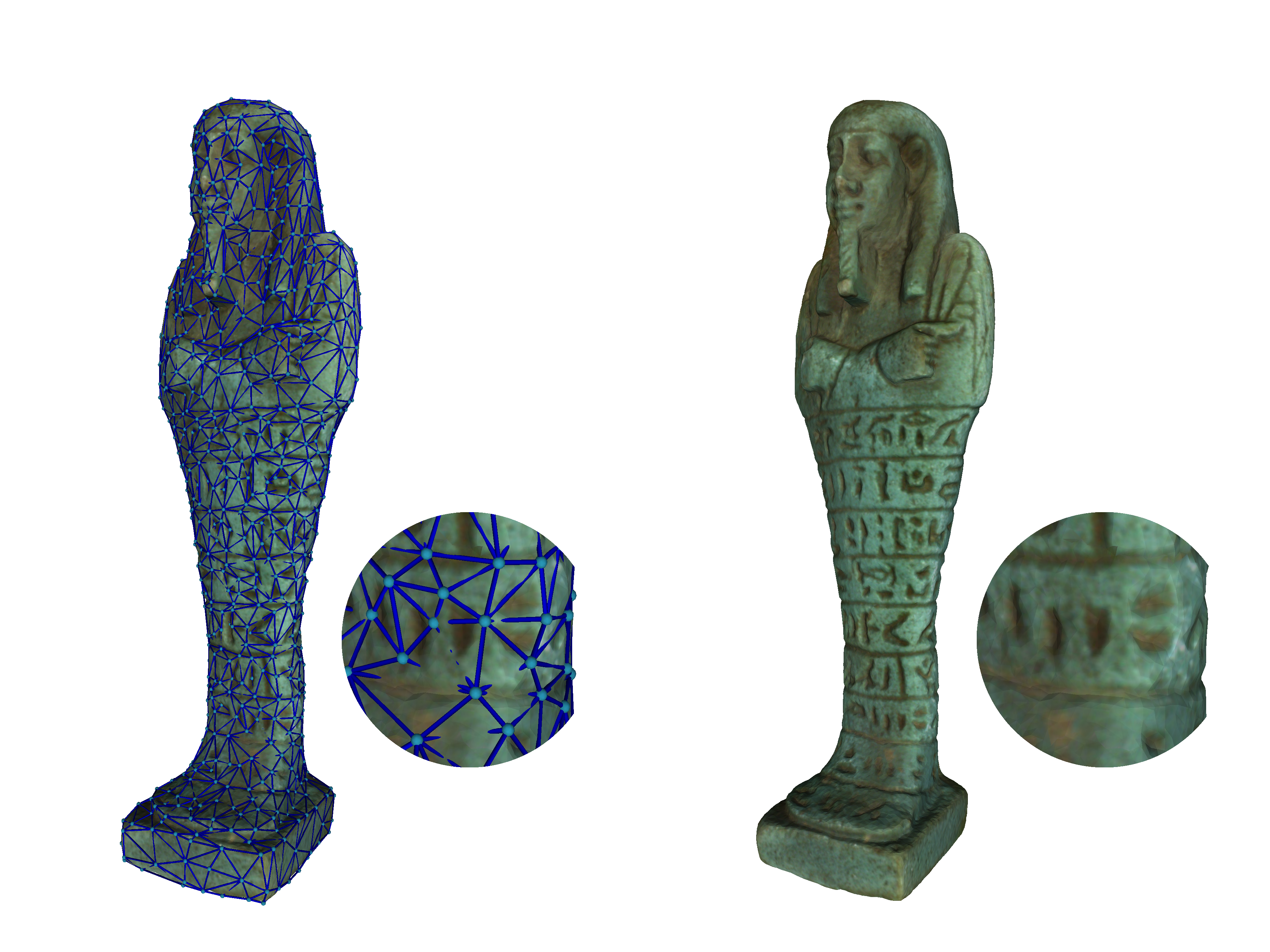The Augmented Reality Museum App
One of the original ambitions of the Virtual Cuneiform Tablet Reconstruction Project was to support virtual access to museum artefacts. Augmented Reality (AR) provides a new way to create virtual exhibitions in the real world. Users can collect, arrange, share and interact with virtual 3D objects and position them in the real-world.
We have created easy-to-use iOS and Android AR apps. The Android AR Museum app is available at the Google Play Store for these supported Android devices.
This work was presented at the 2020 International Conference on Digital Heritage (Euromed):
Virtual Museum ‘Takeouts’ and DIY Exhibitions – Augmented Reality Apps for Scholarship, Citizen Science and Public Engagement
S.I. Woolley, J. Mitchell, T. Collins, R. Rhodes, T. Rukasha, E. Gehlken, E. Ch’ng and A. Cooke
Int Conference on Digital Heritage (EuroMed 2020), Nov 2020, Cyprus.
Preprint: pdf, presentation slides: pdf
and PowerPoint (with video)

The Augmented Reality Museum App
This augmented reality museum app allows users to select and arrange artefacts from the Liverpool World Museum.
3D Virtual Objects:
3D Models are made of points called vertices that define the shape of objects. Connected vertices form a surface from a mesh of triangles. The triangles can be shaded according to the colour of the object and the virtual lighting. This is called rendering. We make the 3D model look real by wrapping it in pixels from photographs of the original object.




3D Models for Download
3D models of the cuneiform tablet and shabti shown above can be viewed in 3D and downloaded here:
About the Apps:
The iPhone apps were coded with Apple’s ARKit and were developed by James Mitchell, Software and Systems Engineering Research, Keele University. The AR resources and Android apps (coded with AR in Processing which makes use of the ARCore library) were designed and developed by Tim Collins and Sandra Woolley.
Our thanks to Dr Ashley Cooke, Head of Antiquities at Liverpool World Museum for supporting our cuneiform work and inspiring the Shabti AR app.
Publication
Virtual Museum ‘Takeouts’ and DIY Exhibitions – Augmented Reality Apps for Scholarship, Citizen Science and Public Engagement
S.I. Woolley, J. Mitchell, T. Collins, R. Rhodes, T. Rukasha, E. Gehlken, E. Ch’ng and A. Cooke
Int Conference on Digital Heritage (EuroMed 2020), Nov 2020, Cyprus.
Preprint: pdf, presentation slides: pdf
and PowerPoint (with video)